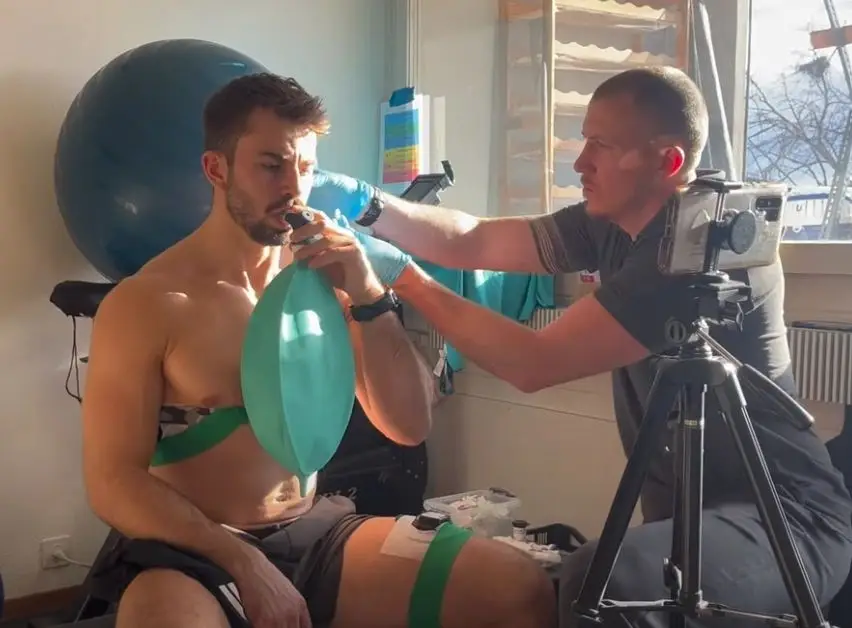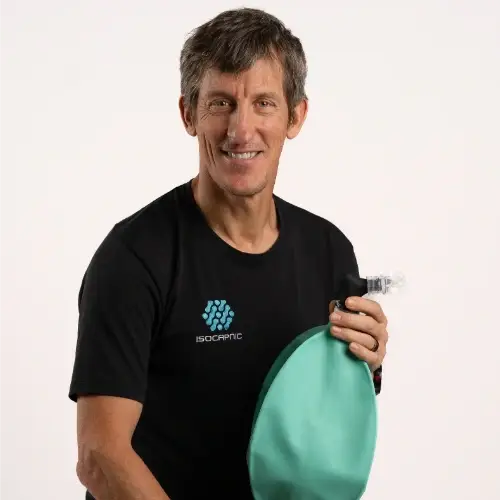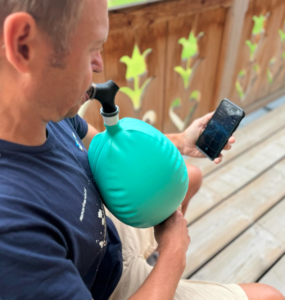In the realm of fitness and performance, understanding the intricacies of physiological responses to exercise is paramount. One individual pushing the boundaries of conventional assessments is Sean Seale from Upside Strength. In his recent YouTube video, Seale introduces viewers to an innovative approach called the Incremental Respiratory Step Test, shedding light on the physiological nuances of respiratory-focused assessments.
The premise of Seale’s test revolves around maximizing lung volumes through isolated maximal breath volumes at incrementally increasing breath rates. This method, executed with precision using the Breathe Way Better (BWB) respiratory trainer, aims to challenge respiratory function progressively over a set duration. Each step lasts 2 1/2 minutes, with a prescribed breath rate starting at 15 breaths per minute and increasing by 5 breaths per minute with each subsequent step.
What sets Seale’s test apart is its ability to maintain CO2 balance, mitigating the risk of hyperventilation symptoms such as dizziness and blurred vision. This unique feature allows athletes to sustain the test without compromising physiological integrity.
Beyond the fundamental respiratory assessment, Seale incorporates several key physiological monitoring tools into the test. These include tracking blood lactate levels at the end of each step, monitoring heart rate responses, and assessing muscle oxygenation using a Moxy monitor placed over the intercostal muscles.
Upon watching the video, several intriguing observations come to light:
1. Lactate Production: The trend in lactate production mirrors what is typically seen in graded exercise tests for runners and cyclists. At lower intensities, there’s a steady or decreasing trend due to efficient lactate utilization by slow-twitch muscle fibers. However, at higher intensities, there’s a notable spike in lactate production, indicative of increased glycolytic activity.
2. Heart Rate Response: The escalation of heart rate throughout the test showcases the substantial cardiovascular demand imposed by high-intensity breathing. Surprisingly, even in a seemingly stationary activity like breathing, the heart rate can climb significantly, underscoring the physiological strain imposed.
3. Muscle Oxygenation: Monitoring muscle oxygenation reveals intriguing inflection points that correlate closely with shifts in lactate trends. This underscores the interplay between oxygen availability, glycolytic activity, and respiratory demands. The decline in muscle oxygenation aligns with heightened glycolytic activity and increasing CO2 production, highlighting the intricate balance between oxygen consumption and energy production.
Seale’s meticulous approach not only offers insights into respiratory physiology but also challenges traditional notions surrounding anaerobic thresholds. By delving into the intricate interplay between oxygen utilization, lactate kinetics, and respiratory dynamics, Seale’s respiratory step test provides a holistic understanding of physiological responses to exercise.
Sean Seale’s Upside Strength Respiratory Step Test represents a paradigm shift in physiological assessment, offering valuable insights into the complex interplay between respiration, metabolism, and exercise intensity. As the fitness community continues to explore novel methodologies for performance evaluation, Seale’s innovative approach serves as a beacon of scientific rigor and practical application.





